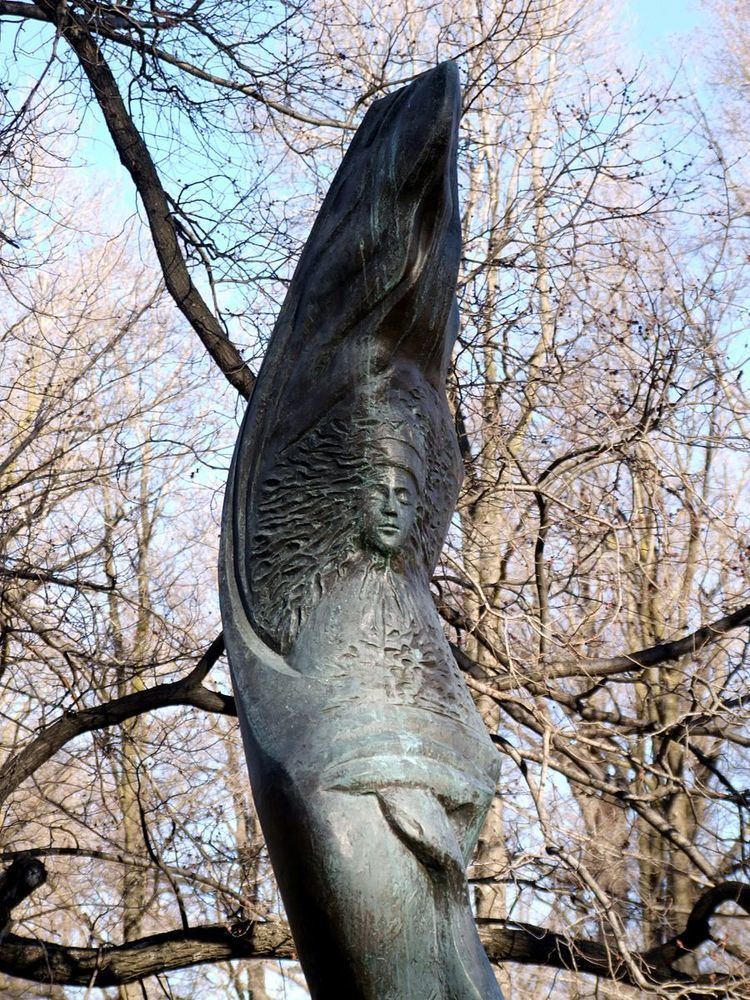 | ||
Eglė the Queen of Serpents, alternatively Eglė the Queen of Grass Snakes (Lithuanian: Eglė žalčių karalienė), is a Lithuanian folk tale.
Contents
Details
Eglė the Queen of Serpents is considered one of the most archaic and best-known Lithuanian fairy tales and the richest in references of Baltic mythology. Over a hundred slightly diverging versions of the plot have been collected. Its multi-layered mythological background has been an interest of Lithuanian and foreign researchers of Indo-European mythology; Gintaras Beresnevičius considered it being a Lithuanian theogonic myth. Interestingly, the tale features not only human–reptile shapeshifting, but an irreversible human–tree shapeshifting as well.
Eglė is both a popular female name in Lithuania and also a noun meaning spruce (Picea). The serpents (žaltys) of the tale are grass snakes in Lithuanian, but because they inhabit the sea, the word may mean a mythical water snake.
Synopsis
The story can be subdivided into a number of sections each having parallels with motifs of other folk tales, yet a combination of them is unique.
First, a young girl named Eglė discovers a serpent in her clothes after bathing with her two sisters. Speaking in a human voice, the serpent agrees to go away only after Eglė pledges herself to him in exchange for his leaving the clothes, not realising the possible consequences. Three days pass, and thousands of serpents come for the bride, but are tricked by her relatives each time. A goose, a sheep and a cow are given instead but the cuckoo warns about the deceit. Enraged serpents return for a final time and take Eglė with them to the bottom of the sea to their master.
Instead of seeing a serpent, Eglė meets her bridegroom Žilvinas, a handsome human - the Serpent Prince. They live together happily and bear four children, until Eglė decides to visit home and her husband denies her permission. In order to be allowed to visit home, Eglė is required to fulfil three impossible tasks: to spin a never-ending tuft of silk, wear down a pair of iron shoes and to bake a pie with no utensils. After she gets advice from the sorceress and succeeds, Žilvinas reluctantly lets Eglė and the children go.
After meeting the long lost family members, Eglė's relatives do not wish to let them back to the sea and decide to kill Žilvinas. His sons are threatened and beaten by their uncles, in order to try to disclose how to summon their father; however, they remain silent and do not betray him. Finally, a frightened daughter discloses it:
"Žilvinas, dear Žilvinas, If alive – may the sea foam milk If dead – may the sea foam blood…"The twelve brothers call Žilvinas the Serpent from the sea and kill him using scythes.
The worried Eglė calls her husband, but unfortunately only foams of blood return from the sea. When Eglė discovers that her beloved is dead, as a punishment for betrayal she turns her children and herself into trees - the sons into strong trees, an oak, an ash and a birch, whereas the daughter was turned into a quaking aspen. Finally, Eglė transformed herself into a spruce.
